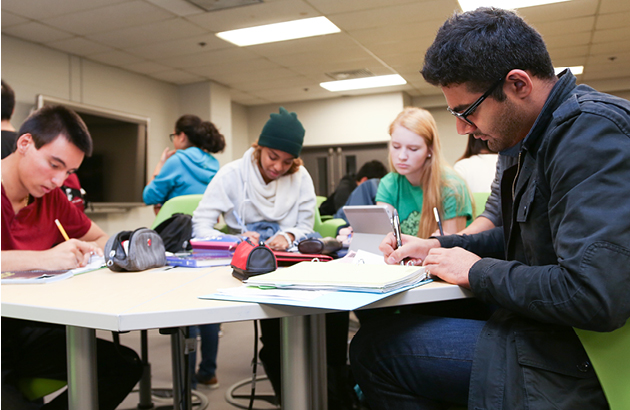Alumni in Singapore and Malaysia rally to build the classroom of the future

U of T Engineering's Singapore-Malaysia alumni group is making its mark on U of T's new Centre for Engineering Innovation and Entrepreneurship by funding one of the building's new Technology Enhanced Active Learning rooms.
Posted on November 20, 2014
As a graduate student at U of T’s Faculty of Applied Science and Engineering in the 1960s, C.K. Chang (MEng 1968) studied fluid dynamics and other subjects in a typical classroom, with the lecturer at the front of the room, talking to students sitting in rows. When Dean Cristina Amon shared plans for the Centre for Engineering Innovation & Entrepreneurship during a visit to Singapore, Chang was impressed – especially by the innovative Technology Enhanced Active Learning (TEAL) rooms. “I am sure I speak for others of my generation when I say I wish we could have studied in such classrooms,” says Chang. “The design is perfectly suited for engineering design work and for the important collaboration that takes place in the classroom.” Chang, an active leader with the Faculty’s Singapore-Malaysia alumni group, mobilized a diverse group of alumni from academe, government and corporate sectors in the region to raise funds for a TEAL room in the new building. They beat their goal by 20 per cent and the room will be named the Singapore-Malaysia Alumni Room in their honour.
“We see the TEAL rooms as almost a lab unto themselves where teaching happens and new ideas are generated, debated, prioritized and executed by students,” says Chang. “This is how we collaborate in the modern working world, so why not build the kind of classroom that emulates the real world.”
The new Centre for Engineering Innovation & Entrepreneurship at the Faculty of Applied Science and Engineering is U of T’s response to the sweeping changes taking place in engineering teaching and learning. The building will include dynamic and flexible environments that break down artificial barriers between teacher and student, fostering collaboration and encouraging active learning and accelerated innovation.
Creating new spaces conducive to active learning (in contrast to traditional lecture-centric classrooms) is part of a recent pedagogical shift in engineering education. The aim, says materials science engineering professor Steven Thorpe, is to encourage intentional thinking about the activities in the tutorials, rather than relying on passive note-taking which often results in poor information retention.
The centre will feature six Technology Enhanced Active Learning (TEAL) rooms such as the one funded by the Singapore-Malaysia Alumni Group. In these rooms, movable chairs and counter-height group tables are serviced by multiple screens that allow for a variety of configurations and easy movement and that are accessible to every student. “TEAL rooms will be critical to supporting the design work that has become integral to engineering courses,” says Thorpe, who teaches a fourth-year design course ideally suited a TEAL classroom. “Ultimately they will support a whole new way to teach and learn.”
